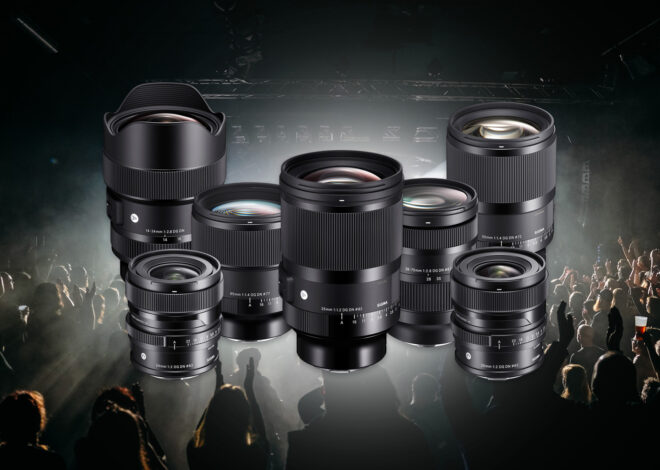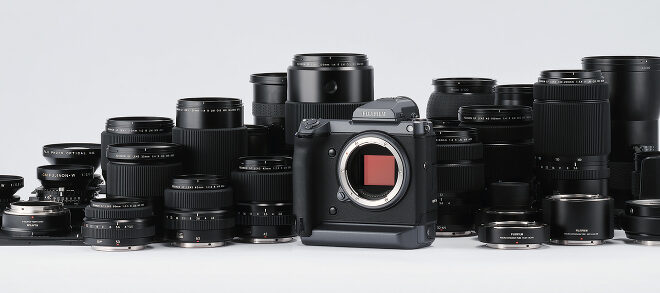
Fuji 70-300 vs Tamron 18-300: What is the Difference?
As an Amazon Associate, I earn from qualifying purchases.
Since the establishment of Fujifilm, it has stayed true to its commitment to providing the best images. Fuji cameras come with a Fuji X mount compatibility criteria so there are only a handful of third-party lenses that support their cameras.
The Tamron 18-300mm was developed as a deterrent to using only the Fuji lenses with their cameras. Not to mention the focal range of this lens is new to the fuji lineup of cameras.
The fuji 70-300mm is an all-around capable lens. it is about 100-400/450mm in terms of full-frame equivalent and it fits in the size of my hand.
I’ll be digging deep into Fuji 70-300 vs Tamron 18-300 to find out which lens comes out on top.
Fuji 70-300 vs Tamron 18-300: Quick comparison chart
Some key differences between Fuji 70-300 vs Tamron 18-300:
| Features | Fuji 70-300mm | Tamron 18-300mm |
| Max Aperture | F4-5.6 | F3.5-6.3 |
| Focal range | 70-300mm | 18-300mm |
| Mount | Fuji X | Fuji X |
| Min Focus Distance | 0.83m | 0.15m |
| Weight | 580g | 620g |
| Maximum image magnification | 0.33X | 0.5X |
| Weather Sealing | Yes | Yes |
| Price | $799 | $699 |
| Buying link | Fuji 70-300mm | Tamron 18-300mm |
| Release date | March 2021 | October 2021 |
What are the key differences between Fuji 70-300 vs Tamron 18-300?
I am going to be discussing the key differences between the two lenses. The main focus will be on what possibilities and setbacks come with purchasing one of the two.
Cost of acquiring:
The Fuji 70-300mm lens comes at a price of roughly around $800.
The Tamron 18-300mm can be purchased for only about $700.
Both are budget-oriented lenses that offer excellent performance at the sub $1000 margin with Tamron being the less expensive model.
Both produce high-quality images with minor variations. So the price difference of $100 impedes the Fuji 70-300mm’s chances slightly.
When comparing prices, the Tamron 18-300mm gets a point and comes out on top.
Design and Size:
The Fuji lens at first sight looks larger than the Tamron lens but it is only in length. The overall dimension of the Fuji lens is less than the Tamron one.
The Tamron 18-300mm comes at around the weight of 620g.
The Fuji 70-300mm weighs only 580g which makes it lighter and gives a more compact feel.
Here is a quick visual comparison of their size and focus wheel positions.
Both come with plastic bodies and hoods so no distinction there. Both give an almost identical feel when held with the Fuji lens being lighter than the Tamron lens.
Both are equipped with a Fuji X mount to use with a Fujifilm camera since this was Tamron’s idea in the first place when manufacturing the lens.
The Fuji lens’s hood is larger than the Tamron lens. Here’s a demonstration.
(source:fauland-photography)
Taking a look at these comparisons the fuji lens gets rewarded with a point.
So Fuji 70-300mm is the winner.
On-hand experience:
Right off the bat, the Fuji 70-300m comes furnished with an aperture control wheel which makes it so much easier to use when dealing with a wide dynamic range. The Tamron doesn’t have an aperture tuner wheel.
With the Tamron 18-300mm the focus wheel is on the back of the lens which sometimes creates complications while switching focus manually as I have to remove my hand from the lens to the wheel to change the focus point.
The focus wheel on the Fuji 70-300 mm sits at the front making it easier to change focus on a fixed frame without moving my hands from the lens. This creates a world of difference for all the nitpicking users looking at all the nitty-gritty details.
Both lenses come with a focal length lock to keep the lens from extending on its own. I had to manually unlock it before I could zoom with the Tamron lens and almost every time I forgot about it after using the Fuji lens.
The Fuji lens’ doesn’t need to be unlocked and I can just start zooming and it unlocks all by itself so that I don’t have to worry about the lock when I suddenly want to take a photo.
So real-life experience point goes to the Fuji 70-300mm and takes the upper hand.
Stabilization and image quality testing:
The Tamron falls behind when it comes to stabilization at 300mm. The Fuji lenses use optical image stabilization which makes the images less shaky while taking shots at full frame.
The Tamron lens doesn’t hold steady and creates blurriness. The Fuji beats the Tamron in stabilization by a quite a large margin
Here is a demonstration.
(source: Camera Conspiracies)
Now let’s look at another picture at 70mm.
(source: Camera Conspiracies)
The sharpness of both images might look similar. But The Tamron lens delivers a sharper image. Although upon closer inspection the sharpness feels almost artificial.
The Fuji lens creates an astonishing picture with more vivid colors and the contrast is also near perfect. The sharpness looks natural as well.
In terms of picture quality at 70mm, the Fuji lens is a serious competitor and will be hard to beat.
When zoomed in to 300mm on the same tree the lenses produce the following results.
(source: Camera Conspiracies)
The Fuji lens delivers vibrant pictures that are sharper than the Tamron lens as if my eyes are drawn to the one taken with the Fuji lens.
The Tamron also falls behind when it comes to brightness as seen in the photo.
The Fuji lens does have a noteworthy disadvantage. The Tamron lens can take the following picture which is not possible with the Fuji lens.
(source: Camera Conspiracies)
This image is one of the Fuji lens’ drawbacks for its lacking 70mm. The Tamron is just one lens that you can take with you anywhere and you have a wide view and you can zoom in on the subjects. Without a doubt, a good consideration for casual photographers.
Let’s take a look at another sample.
(source: DPReview – Peter Foiles)
The sharpness of the two lenses is put to the test here by cropping the images as the point of 300mm is to have that crop capability.
The Fuji 70-300mm at 300mm focal length just delivers sharper images period. The cracks on the window bar are visible when taken with the Fuji lens.
The Tamron introduces some blurriness in the small details that can be observed when cropped.
Fuji 70-300 vs Tamron 18-300: Which one is the right pick?
For just a $100 difference in price, the Fuji 70-300mm provides overall better results. The distinctions in autofocus, stabilization, and color accuracy are all fairly noticeable.
The Tamron 18-300mm seems to be a fairly competitive option but lacks in delivering results when compared to the Fuji 70-300mm. It is just a lot of compromise to get that super zoom range.
But if you want to take wide shots along with zoomed-in shots then you might consider getting the Tamron 18-300mm.
All in all, spending that extra $100 and getting the Fuji lens will be a very good investment. So my pick from Fuji 70-300mm vs Tamron 18-300mm is the Fuji lens.
Final Words
Those were my opinions on the Fuji 70-300 and Tamron 18-300 lenses.
If currently your budget is around $1000 and you’re looking to buy a lens to go with a Fuji camera then these two are good options to choose from.
The Fuji lens will offer you better results with the only downside being that you won’t be able to take the 18mm wide shots that you can with the Tamron.
Related Posts:



